This post may contain affiliate links. Please read our disclosure policy.
How to make a gluten free sourdough starter from scratch, step by step. Make it for love of the taste or for lack of commercial yeast. Get started today!
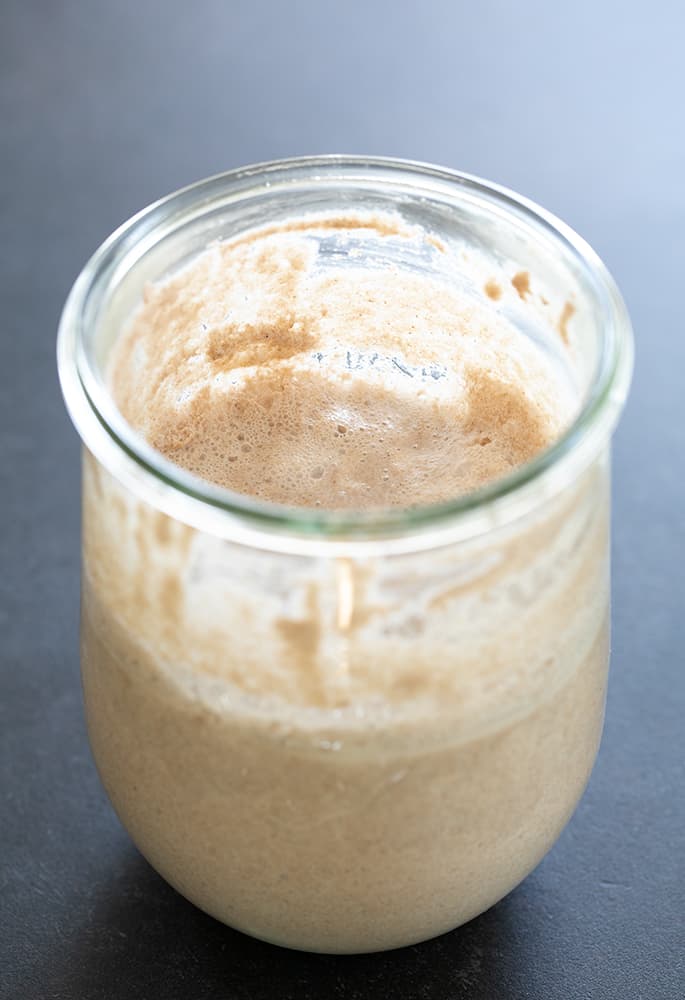
Why use wild yeast in this sourdough starter recipe?
Commercial yeast, like the instant yeast granules that we use in our gluten free bread recipe and many other gluten free bread recipes, is a single, isolated strain of yeast.
A pure “wild yeast” starter contains no commercial yeast at all. A wild yeast sourdough starter is great when you can't get your hands on commercial yeast because the cupboards are bare.
Once it's “active,” a sourdough starter can be used to create sourdough breads of all kinds. I have a whole chapter of pure sourdough breads in my bread book, GFOAS Bakes Bread.
Those recipes are more complex, and use more than just flour and water. They use my gluten free bread flour blend which contains some harder-to-source ingredients. This recipe is for a simple, liquid wild yeast gluten free sourdough starter, and the recipes are not interchangeable.
It does take time to cultivate, though, to allow the fermentation process to mature, so it's not a quick fix. At first, you must take action every 24 hours. Even after it's active, it must be maintained by being refreshed at least once a week. Otherwise, it may become inactive or over-active and spoiled.
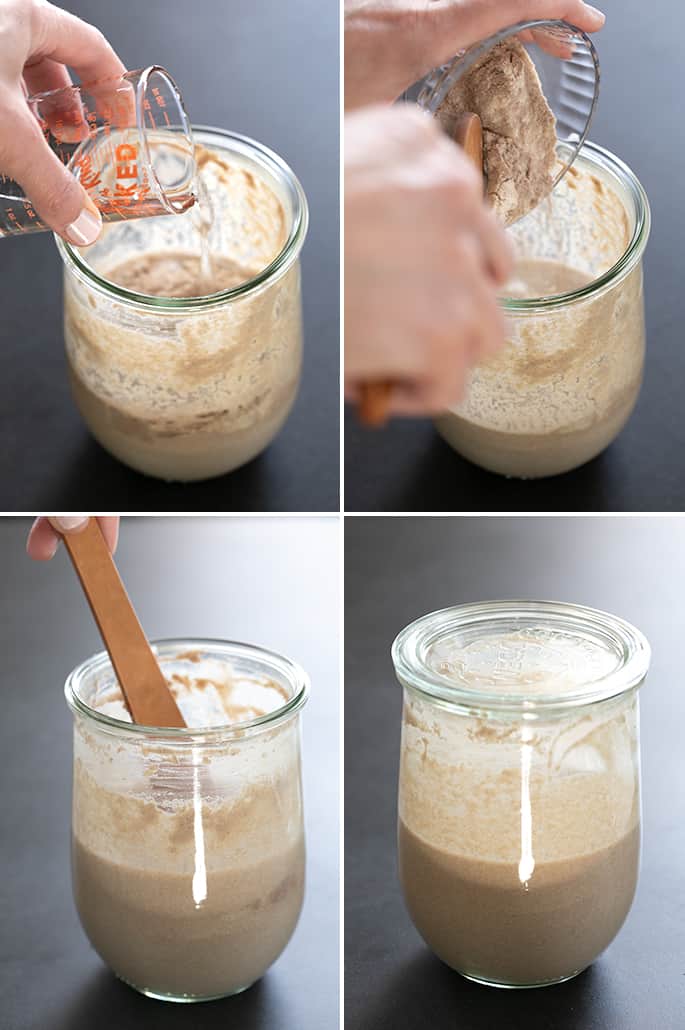
Tools and ingredients needed to make a gluten free sourdough starter
What gluten free flours should I use to make a gf sourdough starter?
I have always found it easiest to create a sourdough starter using a combination of sweet white sorghum flour and teff flour, and following it up with our gum-free gluten free flour blend. I have also successfully made a starter using other types of flours like brown rice flour, and I have read good things about using buckwheat flour.
What kind of water do I use for a sourdough starter?
You will need to use bottled filtered water or at least distilled water. Regular tap water contains chlorine which will kill yeast. Make sure that all of your tools that were washed with tap water are dried completely.
What is the right container and spoon for mixing and storing a sourdough starter?
You will also need a nonreactive container like a clean jar and spoon. Stainless steel is nonreactive, and it's really fine. In an abundance of caution, I tend to avoid all metal, especially before the starter is fully active, so a glass mason jar is great. But don't make yourself crazy.
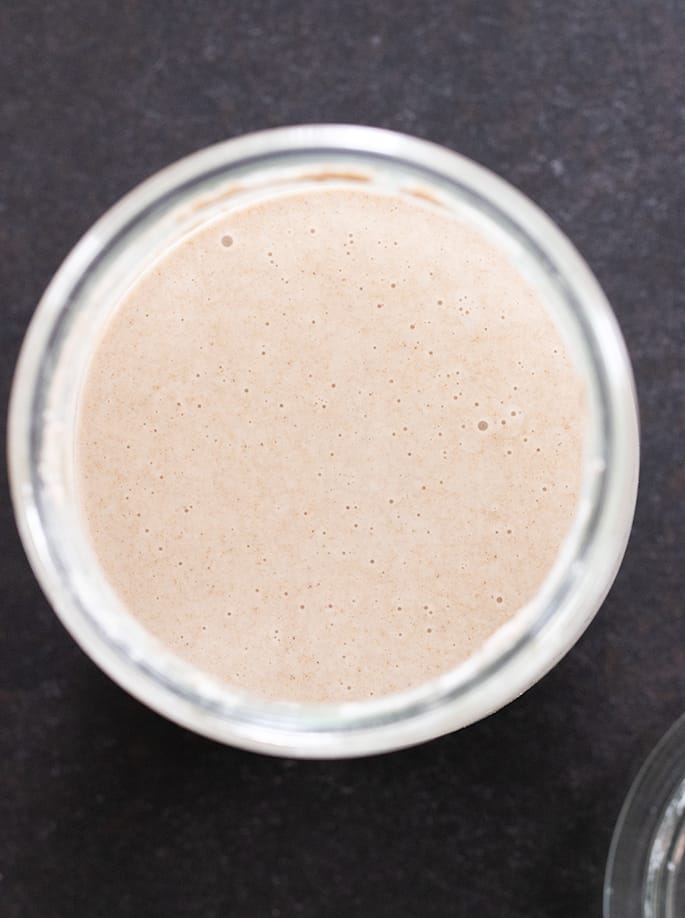
Troubleshooting your gluten free sourdough starter
My wild yeast gf starter hasn't become active at all
Yeast bread baking is an art as well as a science, and has a (sometimes very frustrating) learning curve. Creating a pure wild yeast sourdough starter is doubly so. The most important ingredient is patience
If you do have a bit of commercial yeast on hand, you can add a few grams to the mixture to give your starter a boost. Over time, the commercial yeast will be replaced by wild yeast.
If you're tempted to try to increase the ambient temperature surrounding your starter in an effort to help it grow, you can try lining a heating pad with multiple layers of towels and keeping it on low. Be careful, though, because all yeast will die at very high temperatures.
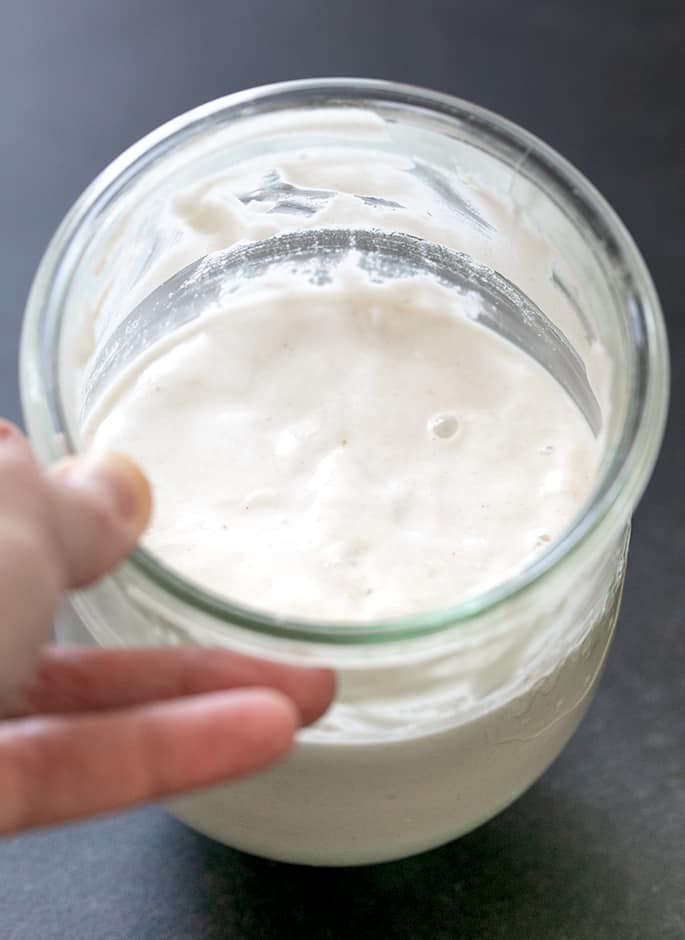
My wild yeast starter hasn't doubled
The doubling sometimes happens so quickly and can be so fragile with this type of simple wild yeast gluten free starter that I couldn't even manage to get a photo of it as doubled.
If you assume it must have doubled because it's so active, try noticing whether there is any residue on the jar above the top of mixture that looks like it could have been left from a risen starter level. You can see in the photo above that there's a “rise line” that is above a cleaner section of the jar.
It also might be worth proceeding with a small-yield recipe. It depends upon whether or not you're willing to risk wasting some ingredients. You can also make crackers if the mixture doesn't rise!
I think my gf sourdough starter has gone bad
Remember, this is essentially a controlled rot of ingredients using available wild yeast. Don't take chances with your health.
If you see something in your starter at any point that has a color you don't recognize, or the odor is at all disturbing and different, please discard it and begin again.
I forgot to feed or refresh my sourdough starter
Honestly, it's probably just fine. Don't listen to anyone who tells you that you have to feed your starter every single day, or that you have to start over again if you miss a step.
If you suspect that something has gone wrong, start again if you can. You don't want to throw good money after bad.
There's a strange liquid on top of my wild yeast sourdough starter
It's called “hooch” and you can stir it back in, then discard and feed or just feed, depending upon which step of the process you're completing. I prefer to drain off the liquid because it makes for a more sour starter, and my family doesn't love that.
How can I use this gluten free sourdough starter in baking?
The most common use of a sourdough starter is sourdough bread. Here is a link to our recipe for gluten free sourdough bread, which you will use to make yeast bread without any sort of commercial yeast.
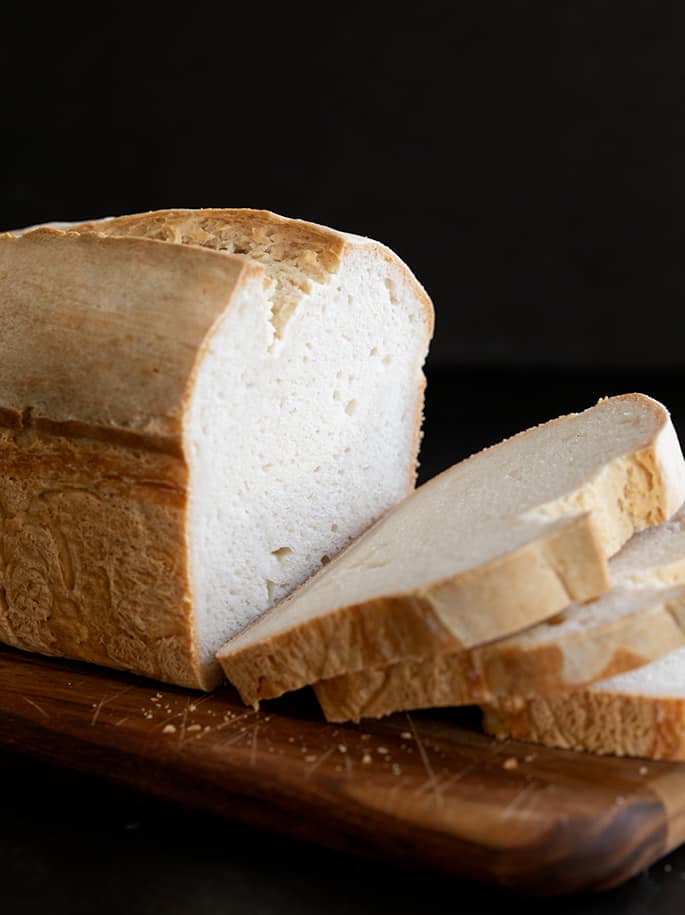
FAQs
The process of making a sourdough starter is unlike almost anything else you'll probably ever do in your kitchen. Here are answers to some of the most common questions about this whole process. Once you understand it, the steps become much more intuitive.
A wild yeast sourdough starter, gluten free or otherwise, is a combination of flour and non-chlorinated water that is combined to creative an environment conducive to the growth of the naturally occurring yeast that is all around us and in gluten free flours.
It's essentially a controlled rot, like kombucha, but if you think of it like that, you may not ever want to make it so let's move on. When yours is good and active, as described in the recipe card below, you'll be ready to bake fresh gluten free sourdough bread with it!
No! They're not. If a sourdough starter was made with gluten-containing flours, it contains gluten and should be avoided if you are on a gluten free diet. Period.
The wild yeast does not remove the gluten from gluten-containing flours. Please consider the source if anyone tells you otherwise.
“Feeding” a starter is another way of saying “refreshing” a starter. Once a starter is “mature,” meaning that it's already active and established, it must be fed by removing some of the mature starter and adding more of the “food,” in the form of water and flour, that make the starter most active and ready to use for baking.
As the yeast in your mature starter rests in your refrigerator, it consumes these building blocks. To keep it alive and active, a wild yeast starter must be fed regularly. It also must be fed soon before baking with it, so it's at its most active.
The best whole grain flours for a gluten free wild yeast starter are: A combination of sweet white sorghum flour & teff flour; brown rice flour; buckwheat flour. You can use these in whatever combination you like, but each element should be present to make it easiest to grow wild yeast.
Gluten Free Sourdough Starter Recipe
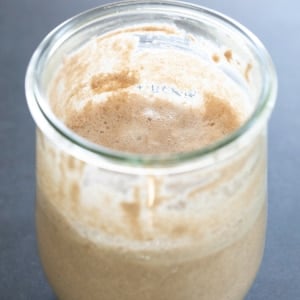
Equipment
- Glass jar or ceramic (must be nonreactive; no metal)
- Nonreactive spoon made of wood or silicone (must be nonreactive; no metal)
Ingredients
To Create The Starter: per day, for 5 to 7 days
- 1 cup (120 g) whole grain gluten free flour, (See Recipe Notes for info about selecting flours)
- 1 cup (8 fluid ounces) spring water or distilled water, at room temperature
To Refresh The Starter: once per week, indefinitely, and before/after using
- ½ cup (70 g) gum-free gluten free flour, (See Recipe Notes)
- ½ cup spring water or distilled water, at room temperature
Instructions
Creating the starter: Morning of Day One: Beginning.
- In a nonreactive container like a glass or ceramic jar, place 1/2 cup (about 60 grams) whole grain gluten free flour(s) and 1/2 cup (4 fluid ounces) spring or distilled water.
- Using a nonreactive mixing spoon (like a wooden or silicone spoon), mix to combine well.
- Cover the container loosely, and allow to sit on the counter at room temperature for 8 to 12 hours.
Creating the starter: Evening of Day 1: Building.
- Remove the cover of the container, and add another 1/2 cup (about 60 grams) whole grain gluten free flour(s) and 1/2 cup (4 fluid ounces) spring or distilled water.
- Using a nonreactive mixing spoon (like a wooden or silicone spoon), mix to combine well.
- Cover the container loosely, and allow to sit on the counter at room temperature for 8 to 12 hours.
Creating the starter: Morning of Day 2: Building.
- Remove the cover of the container, and add another 1/2 cup (about 60 grams) whole grain gluten free flour(s) and 1/2 cup (4 fluid ounces) spring or distilled water.
- Using a nonreactive mixing spoon (like a wooden or silicone spoon), mix to combine well.
- Cover the container loosely, and allow to sit on the counter at room temperature for 8 to 12 hours.
Creating the starter: Evening of Day 2: Building.
- Remove the cover of the container, and add another 1/2 cup (about 60 grams) whole grain gluten free flour(s) and 1/2 cup (4 fluid ounces) spring or distilled water.
- Using a nonreactive mixing spoon (like a wooden or silicone spoon), mix to combine well.
- Cover the container loosely, and allow to sit on the counter at room temperature for 8 to 12 hours.
Creating the starter: Morning and Evening of Days 3 through 7 and beyond: Building and/or Discarding/Building:
- Remove the cover of the container, and inspect the contents by tapping the jar on the counter to see if bubbles begin to break the surface of the mixture, and smelling it to see if it has any sour odor at all.
- If it does bubble and have an odor, discard any relatively clear liquid that has accumulated on top (called “hooch”) + about 1/3 of the volume.
- Then feed it: Add another 1/2 cup (about 70 grams) gum-free gluten free flour and 1/2 cup (4 fluid ounces) spring or distilled water.
- Using a nonreactive mixing spoon (like a wooden or silicone spoon), mix to combine well.
- If it doesn’t bubble and have an odor, do not discard but feed with 1/2 cup whole grain flour and 1/2 cup water as directed above.
- Cover the container loosely, and allow to sit on the counter at room temperature for 8 to 12 hours.
When is the starter ready to use?
- The starter is ready to use once it has ever doubled in size, and you have been feeding and discarding for at least one whole day.
- The doubling is easily disturbed, though, and typically won’t last for very long. It just has to have occurred for you to confidently use it in a bread-baking recipe.
- Before using the starter, you should have "fed" or refreshed it within approximately the previous 12 hours.
- After using the properly fed starter, refresh it (see the next step for instructions), allow it to sit covered on the counter for about 12 hours, and then refrigerate it until it’s ready to be refreshed or used.
Refreshing (feeding) your active/mature starter.
- An active starter can be used for baking, then refreshed and stored, covered, in your refrigerator for about a week.
- After about a week, you should refresh it. Here's how you do that.
- Refresh your mature starter by removing it from the refrigerator and discarding about 1/3 of the volume (including any clear liquid or hooch from the top).
- Next, add 1/2 cup (70 grams) gum-free gluten free flour and 1/2 cup (4 fluid ounces) spring water or distilled water. Mix with a nonreactive spoon.
- Cover the starter and allow it to sit on the counter for about 12 hours before returning it to the refrigerator.
- Repeat the process every week for the life of the starter.
Video
Notes
Nutrition information is automatically calculated, so should only be used as an approximation.

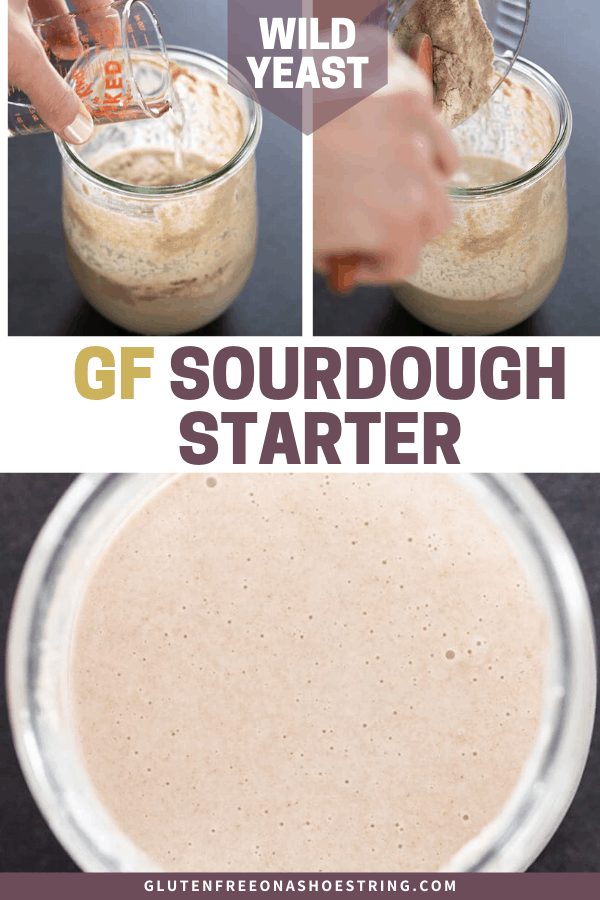
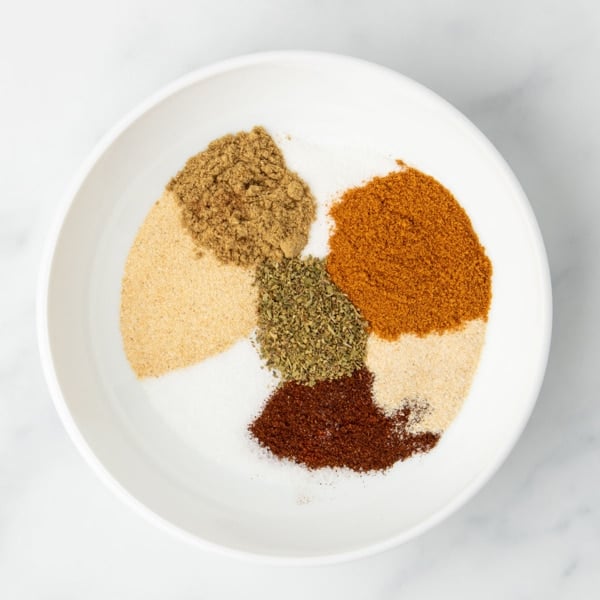
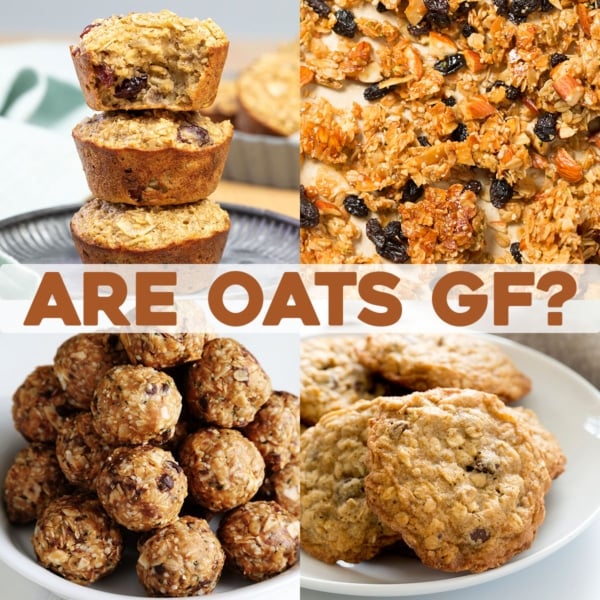
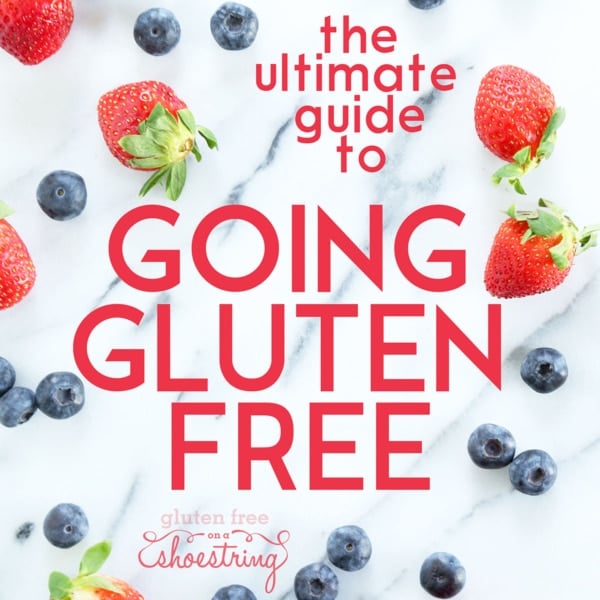
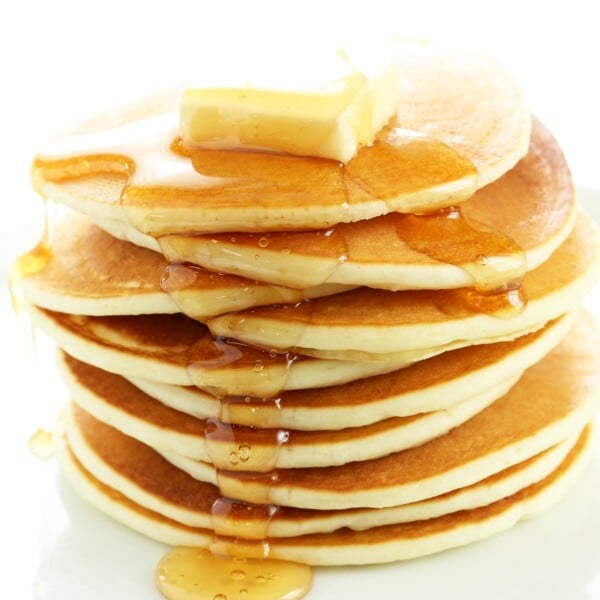









I want to try this, but the only flours I have on hand or King Arthur’s measure for measure and Mamas almond flour blend. Is it worth trying with those?
Hi, Tracy (I fixed your errors so the comment reads as you intended!), King Arthur’s Measure for Measure might work for the gum-free blend (unless it contains xanthan gum?), but it won’t work for bread-baking, I’m afraid, when I share that recipe next week. I don’t have enough experience with Mama’s almond flour blend, but in my limited experience it doesn’t work like a rice-based blend. So sorry I don’t have better news!
I have found that a seed starting heated mat works perfectly to place directly under your starter. I use it to proof dough and infuse oils with herbs, and to make tinctures. I use the oils for cooking, making soap, and oils and tinctures for herbal remedies. I uses next to no electricity.
Interesting, Denise. That sounds like it might be just the most gentle, even heat. There is always the risk of a surge that will kill the yeast, but it sounds like your heated mat minimizes that risk.
Hey Nicole,
Sorry to hear about your husband’s job loss but I believe too that when one door closes, another opens. Had great success using commercial yeast in the Artisan bread recipe. Now, I’m game to try some sourdough starter. If you start the Starter with buckwheat flour do you have to feed it with the same flour every single time for the whole Starter process? I have all the flours available I just don’t think I have enough of any one flour to do all 7 days of starter.
Thanks,
ML
Hi, ML, thank you for the kind words. Once the starter is beginning to be active, usually around Day 3 or 4, the recipe directs you to switch to the gum-free blend. I discuss continuing to use the whole grain flour in the post. I hope that’s helpful!
Nicole, what size of a glass container do you use for your starter? And then what size do you use when you create your mother? I have your bread book and I’m super intimidated but really excited to start!!
Hi, Jamie, the starter I have in a quart-size jar. I don’t use this to create a mother starter like I do in the bread book, Jamie. The bread isn’t quite the same as that chapter in the book. This is a much simplified version that creates a batter-style bread. I hope that helps!
Thank you for sharing this recipe. I’m going to make the starter today. I have a glass jar but was wondering if should cover it with a jar lid or a cheese cloth, please let me know what would be ideal. Thank you!
Hi, Jill, I have mine covered loosely with the glass lid of a Weck jar, but not clamped down. If you don’t have something that can close loosely like that, cheesecloth and a rubber band would do the trick!
Thank You! I have all of your books and love the food resulting from them. Here in Canada I can’t get the whey protein or Pomona pectin at this time and wondered what to substitute. I am down to 1 cup of your better batter…?
Hi, Annie, if you can’t find powdered pectin (I’m afraid there is no substitute), I recommend buying Cup4Cup or making my mock Cup4Cup or Better Than Cup4Cup flour. You only need whey protein isolate for the newer bread recipes, and the sourdough loaf I’m going to share next week won’t call for that.
I’m anxious to try this! However all I have is white gluten free flour and no distilled or spring water. I have a filter for water for my fridge. Can I use white gf flour and either bottled or filtered water be used?
Filters like Brita should reduce the chlorination in water, but not eliminate it entirely, Debbie. If you have bottled spring or distilled water, that works great. If you have any whole grain flours, I’d recommend starting with those. If not, and you do have a bit of commercial yeast, you can add some of that to get things going. It’s all worth a shot!
Hi I am starting my 3rd day and my starter is great. I am using a quart pickling jar and after my addition this morning it is up to the top I could just barely put my lid on. Should I transfer to a larger container?
Thanks for this recipe I have run out of yeast and have not found anywhere.
Is it up to the top because it’s so active, Janet? If so, you should be discarding and feeding, as described in the recipe card under “Morning and Evening of Days 3 through 7 and beyond.” The reason I don’t have you discarding more than 1/3 of the volume from an active starter after pouring off the hooch is because the sourdough bread recipes I’m working on call for quite a lot of starter so I don’t want you to find yourself running low. But you really only need a small amount of starter to be able to keep it going. I hope that helps!
I just started a batch of starter this morning following your directions — I was thrilled to see you are developing a recipe for sourdough bread! I’ve made gluten free sourdough bread with starter before and it was just barely okay. However, everything I make of yours turns out great, I have every faith I’m going to love your recipe. Thank you for all the hard work behind developing recipes and organizing them for us, like the new mind map you sent this week. Love your books, too!!
“Just barely okay” is just not going to cut it, of course, as you clearly know, Marjorie! I really appreciate your faith in me. And I’m so glad you like the mindmaps!
Thank you for always sharing your recipes! I have all of your books – and I visit this site frequently! Always the BEST!
Thank you so much for the kind words and your support, Maggie. That means so much to me. ❤️